Top 12 Open Source Code Security Tools
Open source software is everywhere. From your server to your fitness band. And it’s only becoming more common as over 90% of developers acknowledge using open
While artificial intelligence and big data steal the spotlight, a less glamorous but equally crucial discipline is quietly shaping the future of business: data governance.
With European regulators imposing fines of up to 17.29 million pounds for data mismanagement, it’s clear that data governance is not just a compliance checkbox. It’s a strategic investment that can empower your organization with a tangible return on investment.
The growing importance of data governance has fueled innovation in tools and technologies that help organizations manage their data effectively. These tools ensure data quality, security, compliance, and informed decision-making.
Data governance is the exercise of decision-making and authority over data-related matters. It establishes a framework of roles, policies, standards, and processes to ensure data is used effectively and efficiently throughout an organization. This framework, a key component of a robust cyber resilience framework, helps organizations manage their data assets to achieve strategic goals, mitigate risks, and comply with regulations.
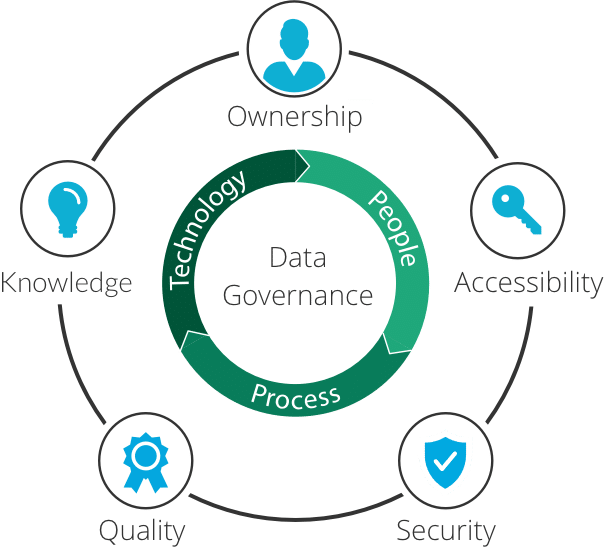
Key components of data governance include:
Effective data governance leads to better data quality, lower costs, improved compliance, and stronger decision-making. Here are the major perks:
However, organizations often face challenges in implementing data governance, such as:
Despite these challenges, the benefits of data governance far outweigh the costs. By investing in data governance tools and practices, organizations can unlock the full potential of their data assets, which can be further enhanced by adopting a multi-cloud architecture for improved scalability, flexibility, and resilience.
Data governance tools are essential for organizations seeking to effectively manage their data assets, especially those involved in complex cyber-physical systems, and overcome the inherent challenges of data governance. These tools provide a centralized platform for defining, implementing, and enforcing data policies, standards, and procedures, helping to mitigate issues like misconfigurations, risky permissions, and data breaches, which are especially prevalent in organizations that rely on SaaS applications. Adhering to SaaS security best practices is crucial to ensure these tools’ effective and secure use.
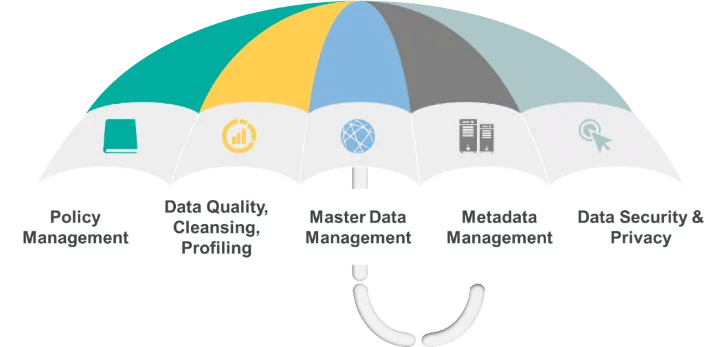
Key features of data governance tools include:
By leveraging these features, organizations can reap numerous benefits, including:
Across all industries, these tools play a crucial role in risk assessment by identifying and mitigating potential data security and privacy threats. For example, in healthcare, these tools can ensure the privacy and security of patient data, while in finance, they can help organizations comply with financial regulations and prevent fraud.
Information’s sheer volume and complexity are skyrocketing, and the right tools can make the difference between thriving and merely surviving. To help you navigate this intricate terrain, we’ve curated a list of the top 10 data governance tools poised to impact 2024 significantly.
These tools empower organizations to manage user consent for data collection and processing proactively, streamlining compliance with privacy regulations like GDPR and CCPA. They offer customizable consent banners, granular consent options, and detailed consent logs to enhance transparency and build user trust.
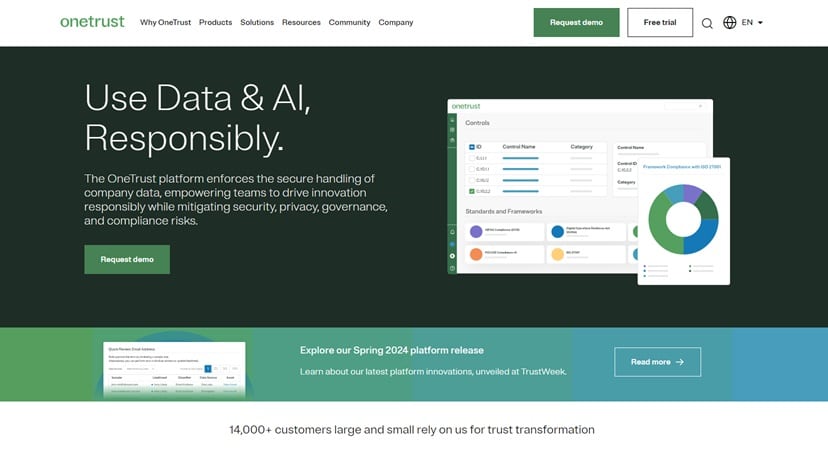
OneTrust is a comprehensive privacy management platform that offers a wide range of features, including consent management, data mapping, and privacy impact assessments. Organizations can build trust with customers and stakeholders by demonstrating a commitment to data privacy.
Main features:
Best for:
Large enterprises with complex data privacy needs.
Price:
14-day free trial available.
Review: “OneTrust privacy and sync enables us to measure the cybersecurity risk and requirements time to time and we do not have to measure it manually. The upside of it is trends that we get to see and filter out our requirements for a security practice without compromising our privacy.” – G2 Review.
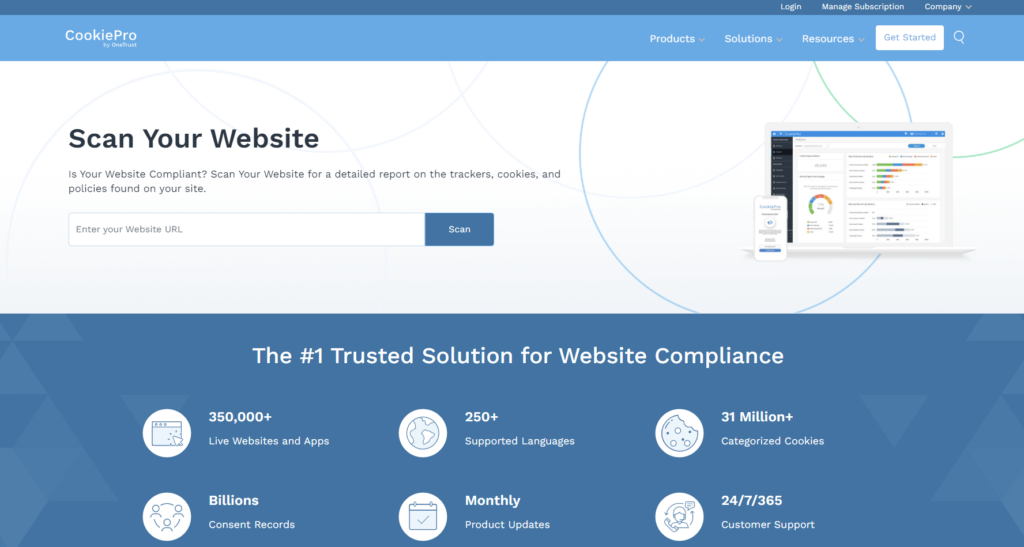
CookiePro is a cookie consent management solution that helps websites comply with cookie laws and regulations. It provides customizable banners, consent logs, and analytics to track user preferences.
Main features:
Best for:
Small to medium-sized businesses looking for a simple and affordable cookie consent solution.
Price:
Free demo available.
Review: “CookiePro is by far the best Cookie Tracking solution that we have tried. It has amazing privacy management options.” – G2 Review.
These tools are designed to proactively identify and address security weaknesses within code, safeguarding against data breaches and upholding the overall integrity of software applications. Code security tools often employ static and dynamic analysis techniques to scan code for potential vulnerabilities, such as hardcoded secrets, injection flaws, and cross-site scripting (XSS) vulnerabilities. By detecting and rectifying these issues early in the development process, organizations can significantly reduce the risk of security incidents and ensure the reliability of their software.
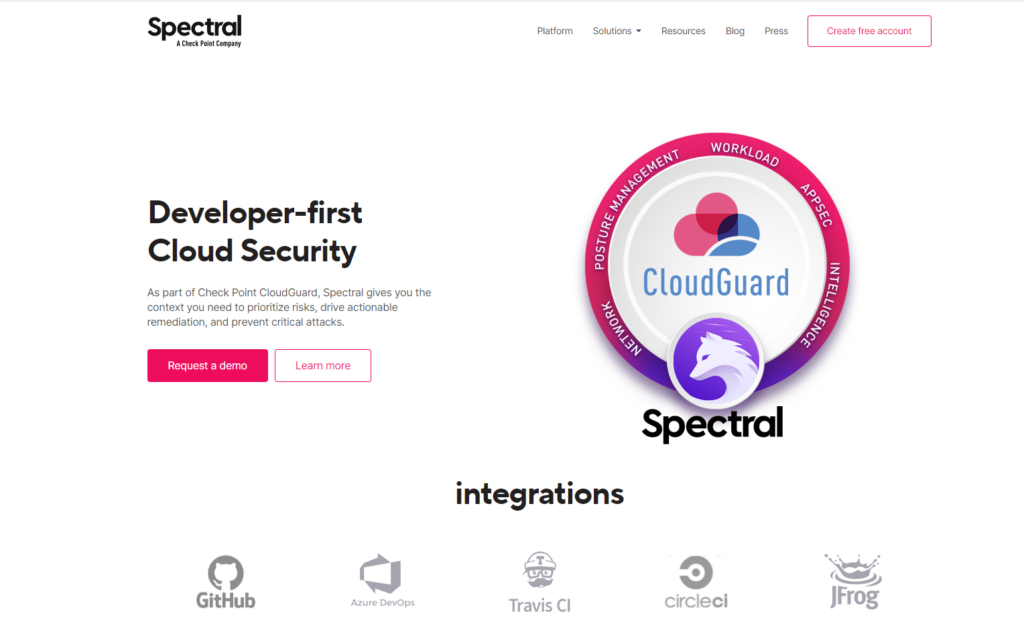
SpectralOps is a code security solution that helps organizations identify and fix security vulnerabilities in their codebase. It uses a combination of static and dynamic analysis to scan code for potential issues, such as hardcoded secrets, injection flaws, and cross-site scripting (XSS) vulnerabilities.
Main features:
Best for:
Organizations that develop software applications and want to ensure their code is secure.
Price:
Review: “It helps us with fixing open code and key security issues in public and private repo. I like the daily scan of all our repositories. It helps us to fix important security issues in the code. Also, the support team is very good.” – Capterra Review.
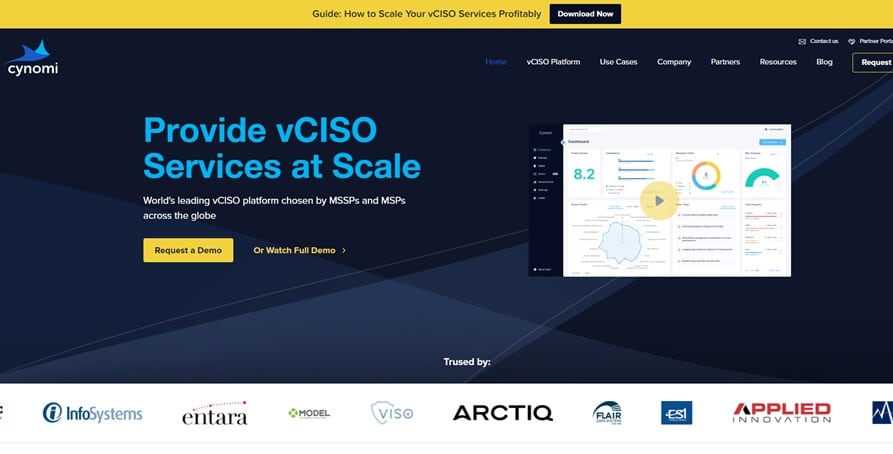
Cynomi is a virtual CISO platform that helps organizations improve their cybersecurity posture. It provides a range of features, including risk assessments, vulnerability management, and incident response. Cynomi also offers a virtual CISO service, which provides organizations access to experienced cybersecurity professionals.
Main features:
Best for:
Mid-sized Managed Service Providers (MSPs) and Managed Security Service Providers (MSSPs), particularly those focused on security or expanding into the cybersecurity market.
Price:
Request a demo to start.
Review: “The details and information given across every security domain provides both direction and current vulnerabilities. Cynomi then gives you the mitigation plan to fix issues. – G2 Review.
Cloud infrastructure and data tracing tools provide organizations with a comprehensive view of their cloud infrastructure, enabling them to track data movement, identify potential bottlenecks, and optimize resource allocation. By monitoring data flows and gaining insights into their data landscape, organizations can make informed decisions about their cloud infrastructure, improve efficiency, and enhance security.
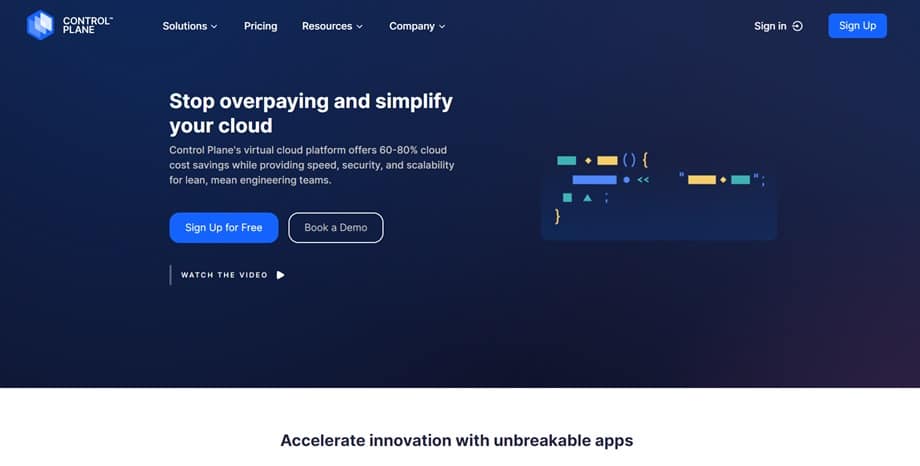
Control Plane is a hybrid cloud platform that empowers organizations to optimize costs, simplify cloud management, and enhance observability and security. It offers features to accelerate deployments and ensure scalability while maintaining a strong security posture.
Main features:
Best for:
Organizations seeking to optimize their cloud infrastructure costs, streamline management processes, and fortify their cloud security measures.
Price:
Sign up for pricing.
Review: “Each of my engineers probably saves 30% of their time by using Control Plane. DevOps tasks that used to take us 5 days we can now do in 1 day, so it allows us to focus on our application rather than our infrastructure.” Customer Review.
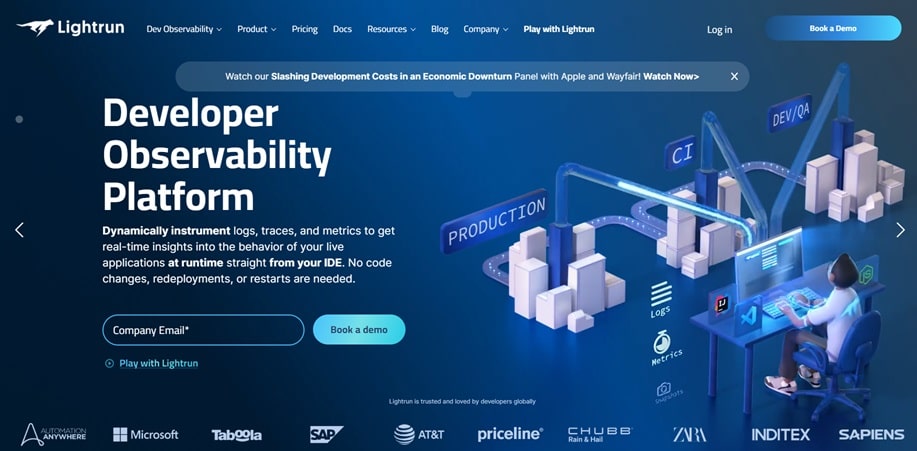
Lightrun is a developer observability platform that helps organizations troubleshoot and debug applications in production with features like distributed tracing, log aggregation, and metrics monitoring. It also offers a cloud-based solution for easy adoption. Lightrun aims to bridge the observability gap and empower developers to solve production issues quickly and efficiently without disrupting their workflow.
Main features:
Best for:
Organizations that develop and operate applications in production and want to improve their troubleshooting and debugging capabilities.
Price:
Book a demo to enquire about pricing.
Review: “Its ability to seamlessly integrate with IntelliJ, allowing for real-time debugging without disrupting the workflow. The snapshot feature is particularly powerful, enabling me to pinpoint issues in complex, multi-service environments with ease and efficiency. This significantly accelerates the debugging process and enhances overall productivity.” G2 Review.
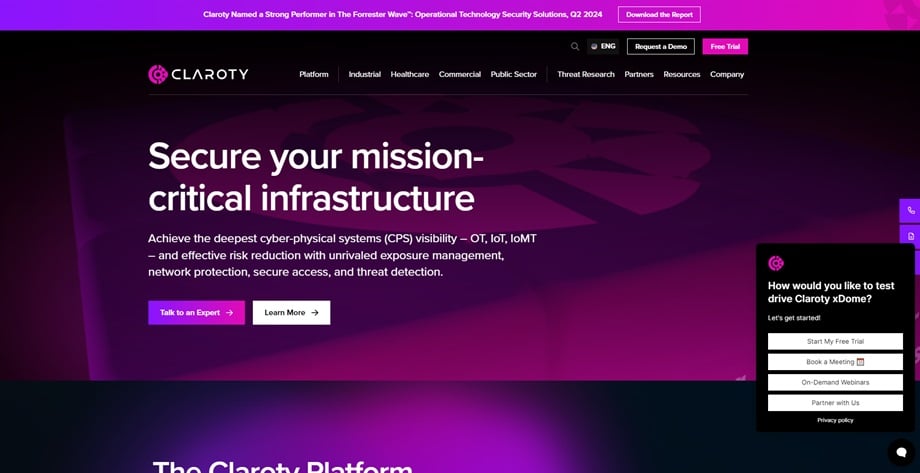
Claroty is a cybersecurity platform that helps organizations protect their industrial control systems (ICS) and operational technology (OT) environments. It provides various features, including asset discovery, vulnerability management, threat detection, and incident response. Claroty also offers a managed security service that provides organizations with 24/7 monitoring and support.
Main features:
Best for:
Organizations that operate industrial control systems (ICS) and operational technology (OT) environments and want to protect them from cyberattacks.
Price:
Free trial available.
Review: “claroty is very good for cyber security. It solves critical problems like it detects real-time issues or vulnerability and after detecting the problem it helps us to take required actions to prevent any risk.” – G2 Review.
These tools help organizations understand how data flows through their systems, enabling them to identify potential bottlenecks, redundancies, and security risks.
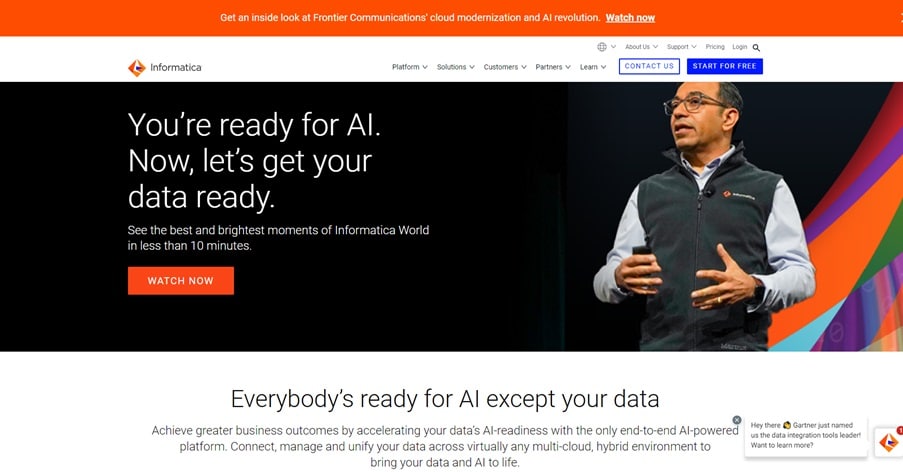
Informatica is a leading provider of data integration and management solutions. Its data governance tool helps organizations define, implement, and enforce data policies and standards. It also provides data lineage, quality, and security features.
Main features:
Best for:
Large enterprises with complex data management needs.
Price:
Contact Informatica for pricing.
Review: “It makes it very easy to build cloud-native-data pipelines which, in turn, can be used for artificial intelligence, Machine learning, and other analytics. Provides a secure way to protect the organisation data.Convenient and user friendly.“ – G2 Review.
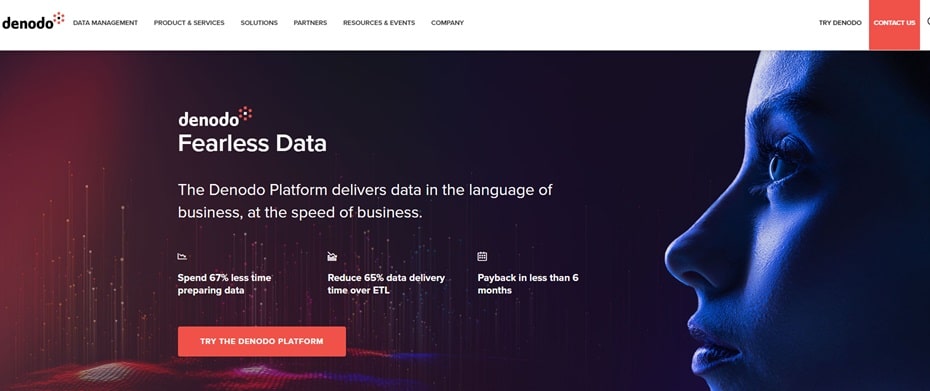
Denodo is a data virtualization platform that provides a unified view of data from disparate sources. It allows organizations to access and query data without physically replicating it. Denodo also offers data governance, security, and performance features.
Main features:
Best for:
Organizations need to access and query data from multiple sources without replicating it.
Price:
Contact Denodo for pricing.
Review: “I appreciate Denodo’s flexibility in connecting to various data sources, including databases, cloud services, and big data platforms. The ability to create virtual data views without physically moving data allows for increased agility in responding to changing business requirements.” – Capterra Review.
Effective data governance requires a holistic approach, a cultural shift towards valuing data, and a commitment to continuous improvement. Data governance can become a competitive advantage with the right tools and mindset.
As you embark on your data governance journey, remember that every line of code is a potential entry point for those seeking to exploit your valuable data. By securing your codebase against vulnerabilities, you’re not just mitigating risk but securing your most valuable assets.
Don’t leave your codebase exposed – start your free Spectral account today and fortify your data governance strategy.
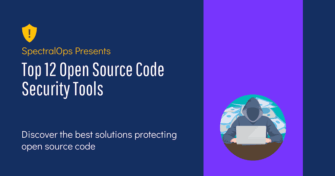
Open source software is everywhere. From your server to your fitness band. And it’s only becoming more common as over 90% of developers acknowledge using open
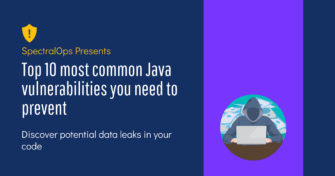
It’s easy to think that our code is secure. Vulnerabilities or potential exploits are often the things we think about last. Most of the time, our
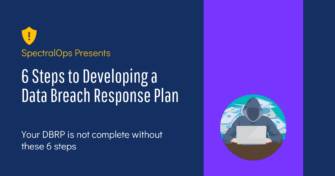
Experiencing a data breach is never pleasant. Just ask any of the hundreds of businesses that suffered a data breach in the past year, exposing billions